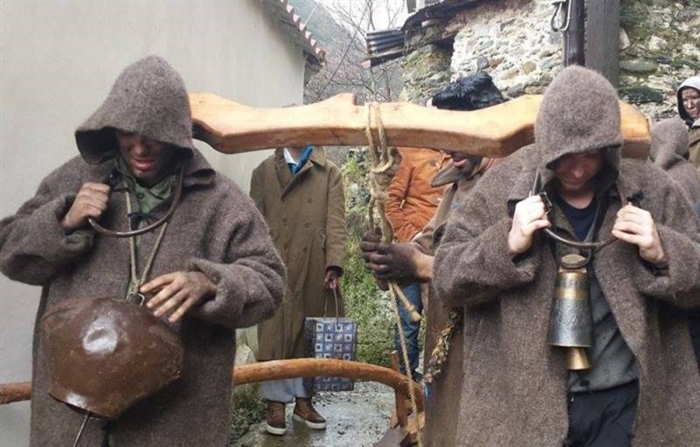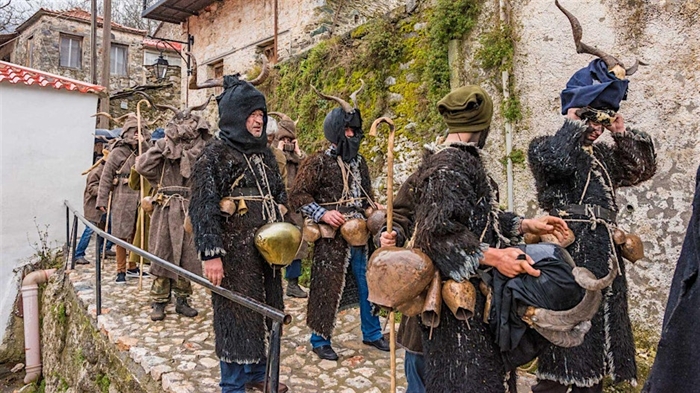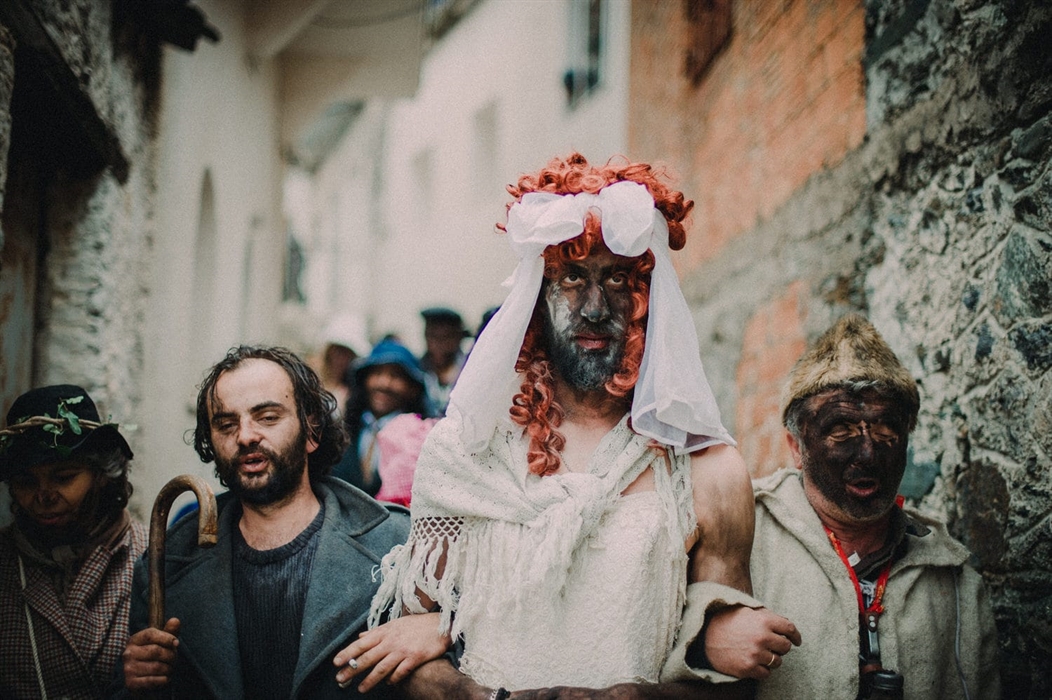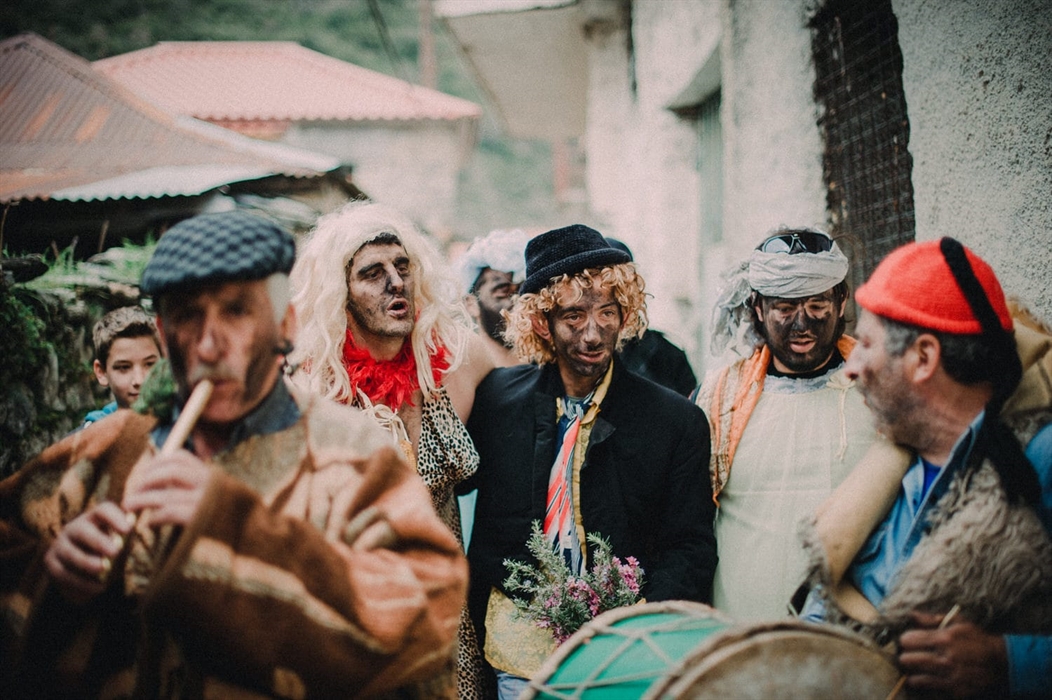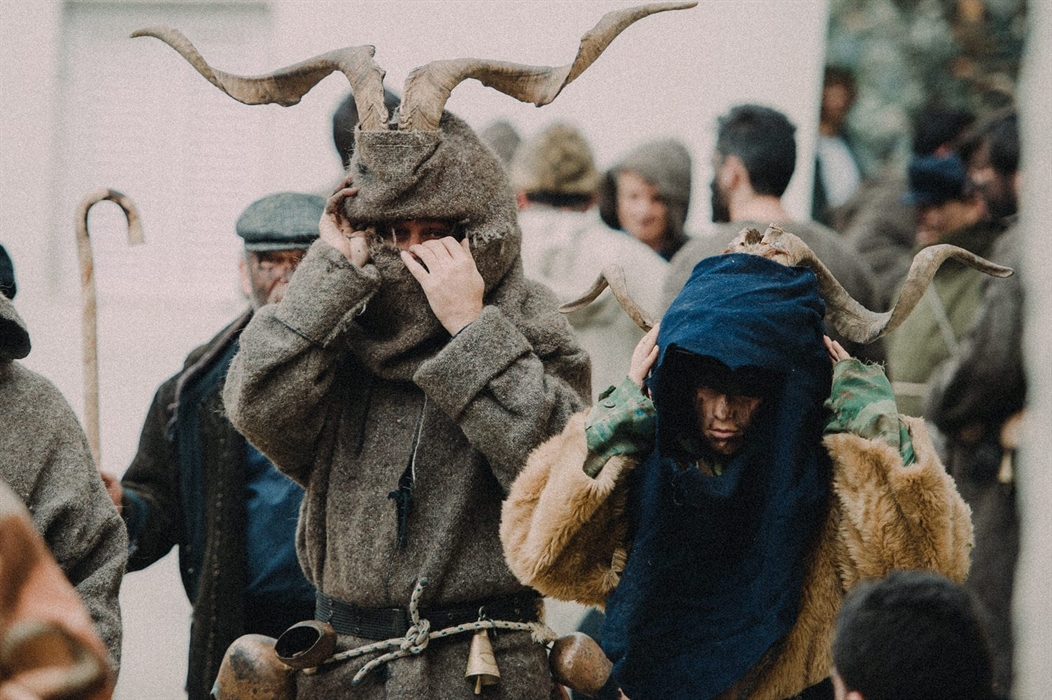Απόκριες στη Νέδουσα της Μεσσηνίας
Τhe carnival in Nedousa, Messinia is an authentic folk event that through its ritual reflects the cycle of life.
The three main phases of the ritual include:
Organ and sowing: This first phase represents the fertility of the land and the beginning of life, with strong symbolic elements associated with cultivation.
Marriage: The union, creation and continuation of life through relationships and social cohesion.
Death and resurrection: The culmination of the event, referring to the inevitable cycle of end and new beginning, linking customs to nature and rural traditions.
This integrated 'scenario' is one of the reasons why the authentic rural carnival of Nedusa is unique. A very special feature is the equal participation of the villagers, regardless of their age and gender, which emphasises the popular character of the event and differentiates it from urban carnivals. The 'treatment' reserved for the Stiskeptes is also special. Although the main 'troupe' that performs the events consists of village residents, the visitors are not considered spectators, but participants, co-celebrate and co-performers.
Early in the morning, the first drums and flutes are heard, calling the members of the "troupe" to gather in specific houses and begin preparations. What is remarkable is the simplicity of the "orchestra" and the fact that these two unique instruments are made by the villagers. During the day, bagpipes and flutes will change hands many times, since many are those who know the main purpose that accompanies the carnival. The smudging of the participants with soot from a homemade oven begins. A kind of equation is achieved, as with the soot all faces, beautiful and ugly, look the same. This is the time when the first sexual innuendos and provocative smooches are heard. Seatism gives way to libertinism while images from the Dionysian cults and the cult of Phallus make their appearance. The agermos follows, a procession that passes through all the houses of the village and collects offerings that will be used later at the common table. The procession's route forms a protective circle around the village. This is followed by the common table, which is an "Invitation" for peace and protection, and unites in sacred bonds all those who participate.At the same time, in a village house, members of the "troupe". wear heavy shepherd's bells, three-armed clothes and helmets with goat's horns. The time of the climax is approaching.
This unique ritual is a living heritage that combines elements of folklore, archaeology and rural tradition, offering an impressive spectacle for those who experience it.
Σχετικό περιεχόμενο χρηστών (UGC)
Ενημερωθείτε για ενδιαφέροντα θέματα γύρω από τον προορισμό μέσα από το περιεχόμενο των χρηστών μας
Newsletters
- About Us
- FAQ's
- Map
- Tourism Information Centers
- Disclaimer
- Sitemap
- Our Brand
- Media Room
- Add your Business
- Corporate
- MICE

Peloponnese. Greece beyond the obvious
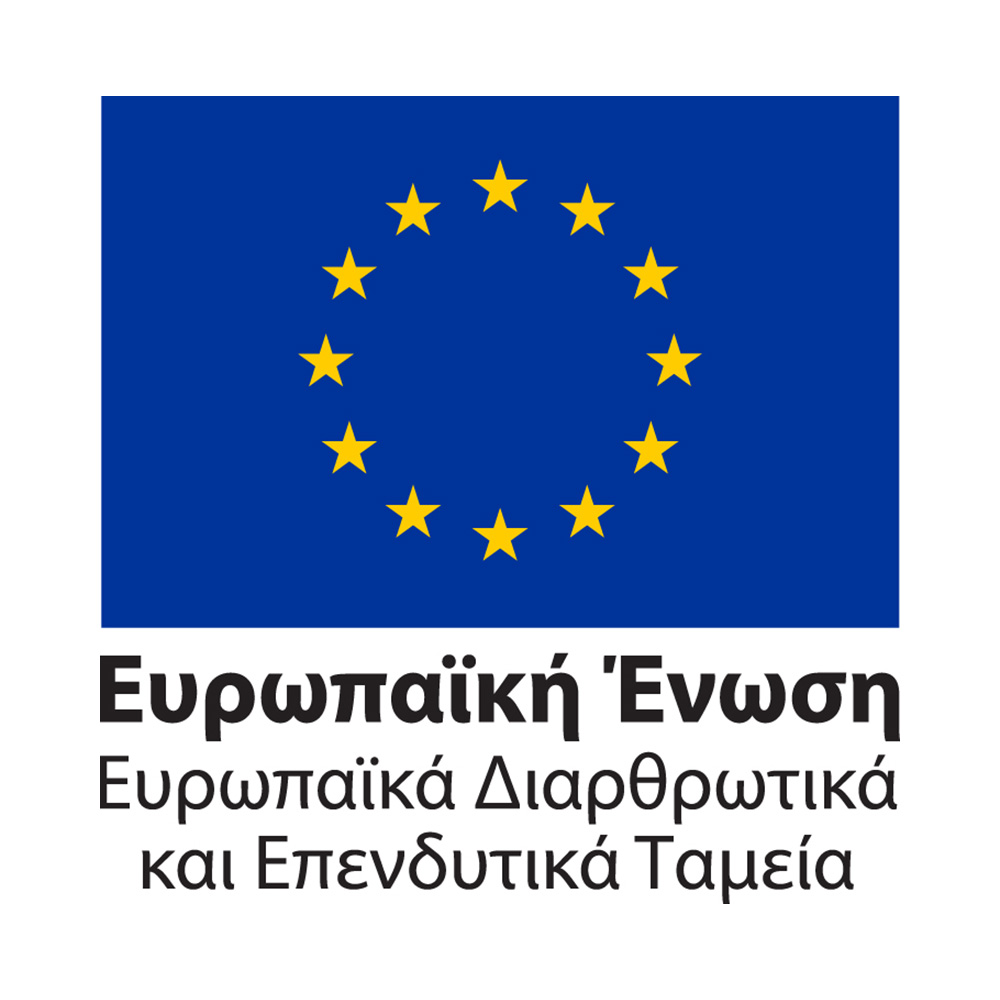

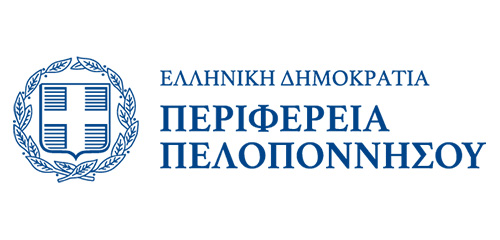
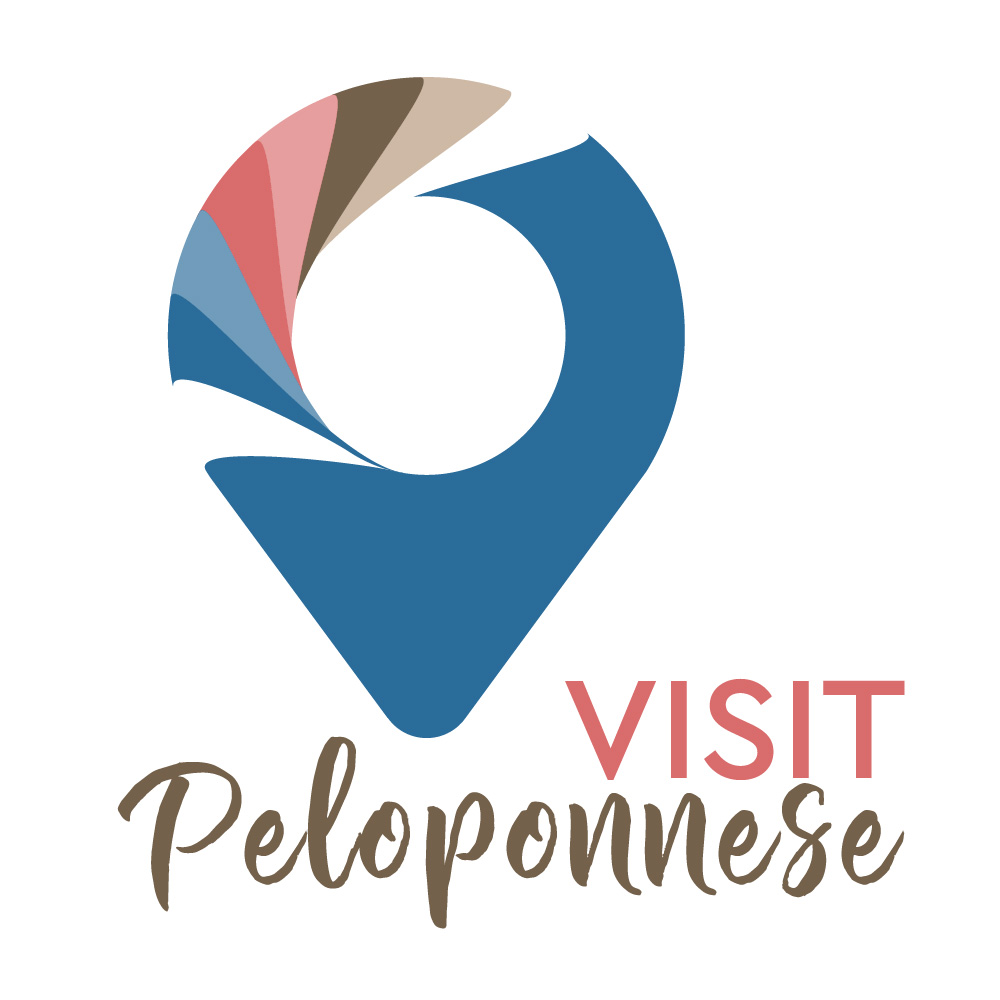

Design and creation from Cosmote
Marinas and Moorings
Diving Centers
Get Inspired
- Media Gallery
- Peloponnese Travel Blog
- The Peloponnese in the Media
- Your Feedback
- Users' General Content
- Users' Local Products
- Users' Events Content
- Ask a Local
More
- My peloponnese vibe
- Our providers Network
- Destinations Map
- Weather
- Public Transport
- Frequently Asked Questions
- Useful Phones
- B2B
- Destination Statistical Data
- Contact

